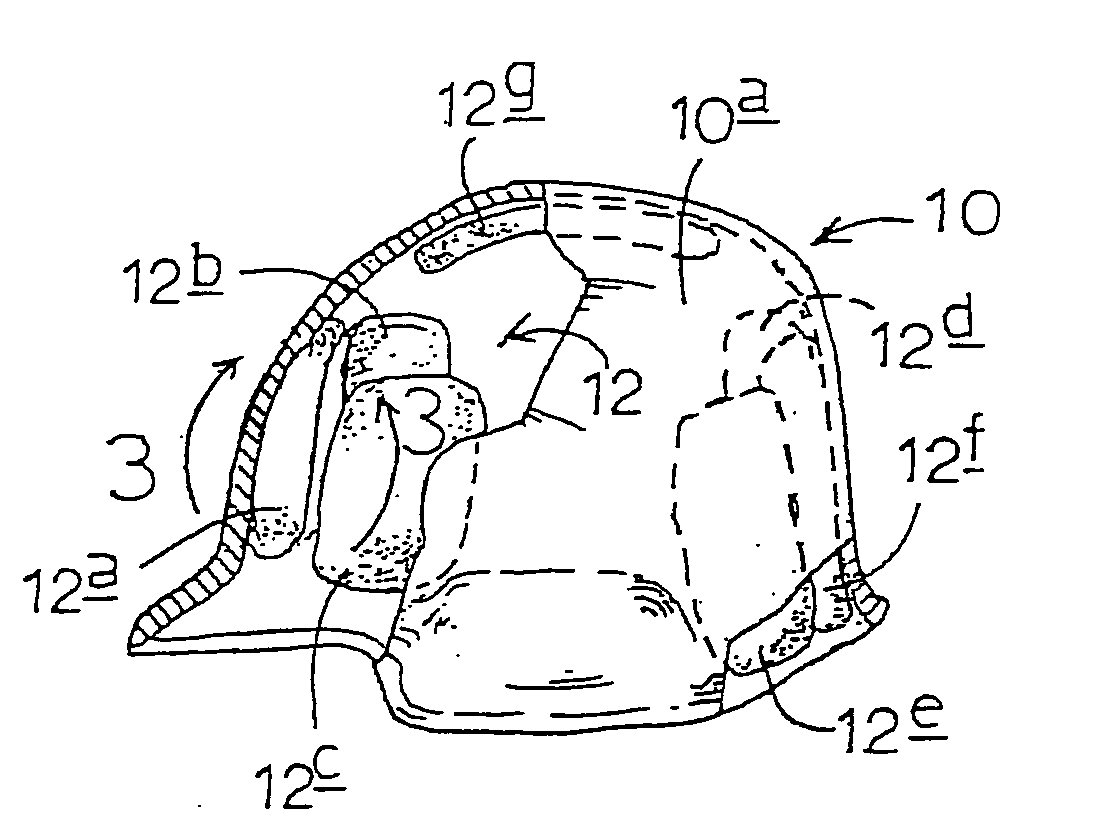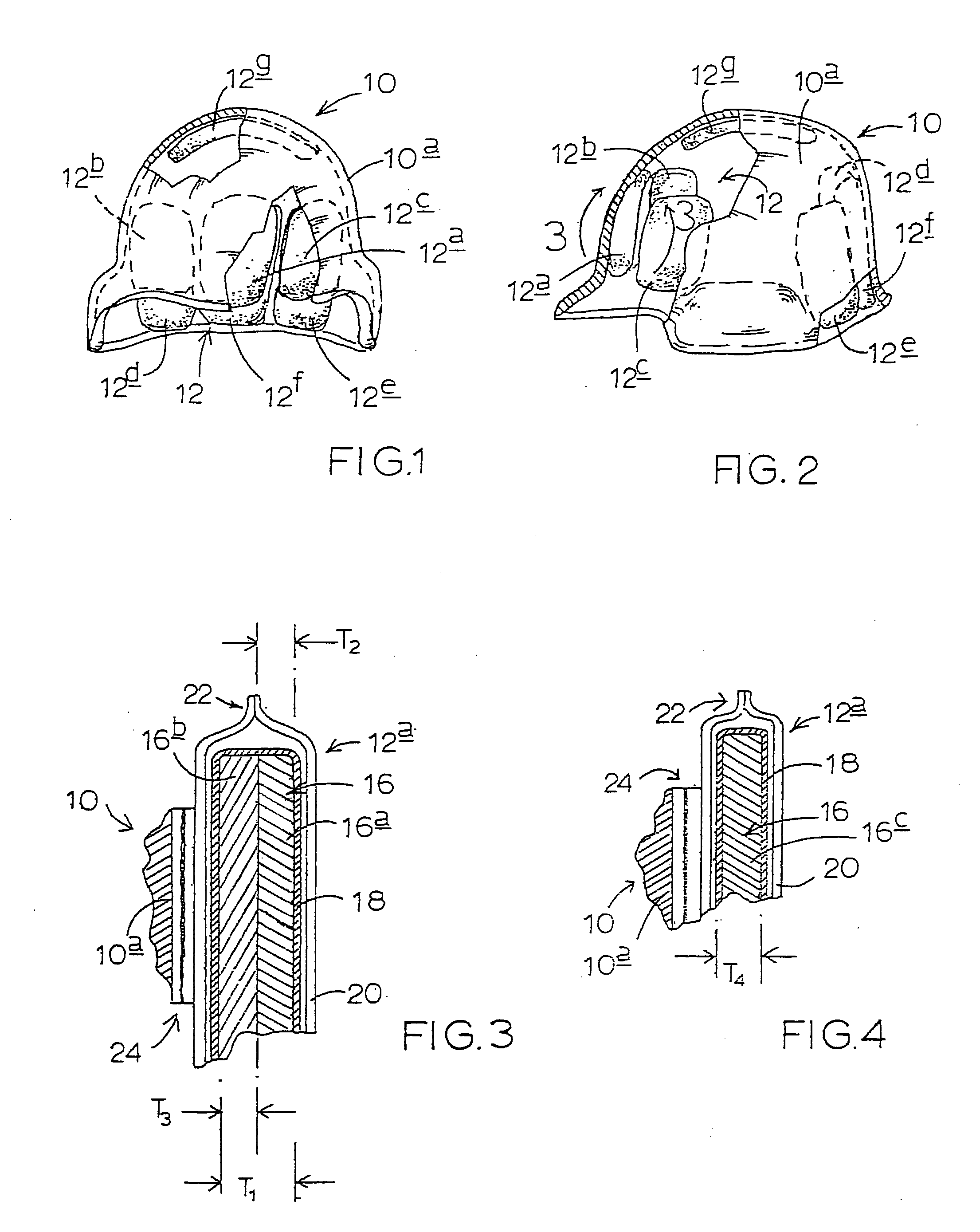Helmet cushioning pad with variable, motion-reactive applied-load response, and associated methodology
a technology of adaptive padding and adaptive padding, applied in the field of human body protective and cushioning helmet interface (shock absorption) structure, can solve the problems of reducing the likelihood of serious injury, poor job, and many complaints from users, and achieves significant anti-injury impact delivery
- Summary
- Abstract
- Description
- Claims
- Application Information
AI Technical Summary
Benefits of technology
Problems solved by technology
Method used
Image
Examples
Embodiment Construction
[0020] Turning attention now to FIGS. 1, 2 and 3, indicated generally at 10 is a military helmet including a shell 10a. In all respects, shell 10a is completely conventional in construction, and might have any one of a number of different specific constructions and configurations.
[0021] Fastened in one of a variety of appropriate manners on the inside, concave, dome-like surface of shell 10a is an installation 12 of inside-site-selectable, shock-absorbing, load-cushioning pad structures constructed and operable in accordance with the present invention. Installation 12, in the particular setting illustrated in these figures and now being described, includes seven, individual, multi-layer, load-cushioning pad structures, or pads, 12a, 12b, 12c, 12d, 12e, 12f, 12g, each of which includes one preferred form of a central, or core, load-cushioning instrumentality possessing certain characteristics which are key to the structure and functionality of the present invention. Pad 12a is joine...
PUM
| Property | Measurement | Unit |
|---|---|---|
| acceleration-rate | aaaaa | aaaaa |
| energy-absorption characteristics | aaaaa | aaaaa |
| hardness | aaaaa | aaaaa |
Abstract
Description
Claims
Application Information
 Login to View More
Login to View More - R&D
- Intellectual Property
- Life Sciences
- Materials
- Tech Scout
- Unparalleled Data Quality
- Higher Quality Content
- 60% Fewer Hallucinations
Browse by: Latest US Patents, China's latest patents, Technical Efficacy Thesaurus, Application Domain, Technology Topic, Popular Technical Reports.
© 2025 PatSnap. All rights reserved.Legal|Privacy policy|Modern Slavery Act Transparency Statement|Sitemap|About US| Contact US: help@patsnap.com


